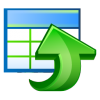Online Documentation for SQL Backup for SQL Server
Version history
|
Product name |
Version |
Release date |
|
EMS SQL Backup |
May 16, 2018 |
|
|
EMS SQL Backup |
May 08, 2017 |
|
|
EMS SQL Backup |
April 3, 2017 |
|
|
EMS SQL Backup |
January 30, 2017 |
|
|
EMS SQL Backup |
August 29, 2016 |
|
|
EMS SQL Backup |
April 13, 2016 |
|
|
EMS SQL Backup |
February 11, 2016 |
|
|
EMS SQL Backup |
July 16, 2015 |
|
|
EMS SQL Backup |
February 27, 2015 |
|
|
EMS SQL Backup |
November 28, 2014 |
|
|
EMS SQL Backup |
July 7, 2014 |
|
|
EMS SQL Backup |
February 25, 2014 |
|
|
SQL Angel 1.3 |
November 12, 2013 |
|
|
SQL Angel 1.2 |
June 10 , 2013 |
|
|
SQL Angel 1.1 |
April 1, 2013 |
|
|
SQL Angel 1.0 |
December 12, 2012 |
- The conditions in maintenance tasks have been implemented.
- Improved maintenance tasks editor.
- Support for converting maintenance plans SSIS 2012-2017.
- The error on selecting databases and objects has been fixed.
- Some errors in the installer have been fixed.
- Improved displaying of active tasks.
- Many other minor fixes and improvements.
- In case of simultaneous task execution the status was sometimes displayed incorrectly. Fixed now.
- Maintenance Cleanup. Removing of backup files from Google Drive was incorrect when folder contained more than 100 files. Fixed now.
- Restore. Not all files were displayed when browsing on Google Drive. Fixed now.
- Sometimes the 'The conversion could not be completed because the supplied DateTime did not have the Kind property set correctly' error occurred on getting logs from the server. Fixed now.
- Added support of files/filegroups backup.
- Possibility to restore separate files and filegroups from backup (partial restore).
- Bulk Restore: restoring several databases from specified backup folder with optional scheduling.
- Added support of native backups split into multiple files.
- Now it is possible to reduce policy e-mail notification text to execution status only.
- Added the option to delete backup history on dropping the database.
- Now it is possible to automatically delete backup files downloaded from remote storages/clouds after restoring.
- Extended logging added on testing connection to SMTP-server.
- Lots of other improvements and bugfixes.
1. Maintenance cleanup operation has been significantly optimized.
2. The error of upgrading to version 2.1 using a standalone installer fixed.
3. Backup file names were cut off. Fixed now.
4. An error occurred on uploading backup files to the folders with high depth of FTP. Fixed now.
5. The program was unable to get server status when hardware configuration had been changed. Fixed now.
6. The 'There is already an open DataReader associated with this Command which must be closed first' error occurred when differential backups were performed with splitting by databases. Fixed now.
7. The 'Specified argument was out of the range of valid values' error occurred when backups were uploaded to cloud storages. Fixed now.
8. Lots of other improvements and bugfixes.
1. The backup speed has been significantly increased on uploading to cloud storages with "on the fly" approach.
2. Support of SQL Server Failover Cluster.
3. Proxy support for Azure cloud storage.
4. The possibility to search for several backup files on cloud storages has been added.
5. Added possibility to set authorization parameters on a shared folder in Log/Database Shipping tasks.
6. Added detection of possible restore sequence breaks to reveal unwanted third-party software backups which may affect restore process.
7. Lots of other improvements and bug-fixes.
1. 'The time zone ID '' was not found on the local computer' error occurred on updating from 1.7 version to 2.0 version. Fixed now.
2. If two machines were in the same workgroup, the privileges were applied incorrectly on CIFS/NetBIOS connection. Fixed now.
3. The permission issue on installation of local server-side components has been fixed.
4. System bit depth was detected incorrectly in some cases on local server-side components installation. Fixed now.
5. The 'The supplied DateTime represents an invalid time' error occurred on DST clock shift. Fixed now.
6. Lots of other improvements and bug-fixes.
1. Backup encryption has been added in SQL Server backup for the editions, supporting this option.
2. Added TLS/SSL encryption options in SMTP-server connection options to support popular email services.
3. Support for Dropbox and Google Drive storages has been added.
4. T-SQL statement is now executed on the database which it has been run for from Quick Maintenance Actions.
5. Uploading files from cloud storages has been implemented in Get backup files from server wizard.
6. The {database_name} tag has been added for backup folders in Backup database wizard to automatically sort backup files to different folders.
7. Backup chains are now built using server LSN in Restore database wizard, which allows guaranteed restoring to any point of a database backup.
8. When using shared configuration, the console is now set to read-only mode, if the same configuration is already opened in another console instance.
9. The Cloud connection wizard has been implemented to manage connections to cloud storages.
10. Other improvements and bug-fixes.
1. Ability to restore databases from network/cloud storages.
2. Now it is possible not to store backup files locally and use only network/cloud storages for this purpose.
3. Ability to delete old backup files from network/cloud storages.
4. Ability to create tail-log backup before restoring a database.
5. The 'Cut', 'Copy', 'Paste' features are added to the Policy Editor.
6. Some other improvements and bugfixes.
- Free version of SQL Backup is available now. The number of maintainable databases per SQL Server instance is restricted to two databases.
- Added the possibility to copy backup files from SQL Server to the machine where SQL Backup Administration Console is running ('Get Backup To Console' wizard).
- Added the possibility to upload backups to Microsoft Azure storage.
- The ability to overwrite existing backup files in network folders (SMB/CIFS) is implemented.
- Now it is possible to move/rename folder for backups specifying new path in service settings. Moved backups are handled automatically.
- There was a restriction which prevented adding some databases in the 'Database Shipping' wizard. Fixed now.
- Lots of other improvements and fixes.
- Added the possibility to change the time zone in the EMS SQL Backup Administration Console.
- Daylight saving time using is improved in planning policies time execution.
- Added the possibility to set HTTP proxy for uploading backup files using FTP.
- License Activation and License Deactivaion wizards are improved.
- Other improvements and bug-fixes.
- The Built-In Scheduler is implemented to execute policies on servers without SQL Server Agent, for example, SQL Server Express. The ability to use SQL Server Agent remains.
- The remote and local installation of Server-side components is improved and simplified:
- Possibility to save the settings used for remote setup.
- Numerous hints, messages and validations when setting parameters.
- Remote install through custom network share in case of absence of ADMIN$.
- Possibility to specify the port for server instance.
- Database Shipping: the possibility to ship full database backup from one SQL Server instance to another on schedule.
- More detailed log for Tasks and Steps. Now the log contains the source data.
- Improved support of SQL Server 2014.
- Trial period counter worked incorrectly in some cases. Fixed now.
- The decompression file errors for some configurations were fixed.
- At times the shrinking of log files of EMS SQL Backup failed. Fixed now.
- Lots of other improvements and bug-fixes.
- The product is renamed into EMS SQL Backup.
- License Manager is a very useful license key management.
- Server-side components updater: multiple update of server-side components.
- To start Administration Console you do not need Administrator privileges.
- Task scheduler errors are fixed.
- Dates localization errors are fixed.
- Memory leaks are fixed.
- Other small improvements and bug-fixes.
- Support of remote storages to upload and store backups.
- Network folders, network-attached storages (NAS).
- Upload using FTP (ImplicitSSL / ExplicitSSL), SFTP (SSH) protocols.
- Support of cloud storage Amazon S3.
- Possibility to add unlimited number of remote and local storages for each backup.
- Support of 'Check orphaned users' option to restore backups.
- New macros for backup folders: {backup_root_folder}, {server}.
- Log efficiency and representation are improved.
- Improved design.
- Added the possibility to verify the integrity of the resulted files after the backup process (RESTORE VERIFYONLY & CHECKSUM).
- Displaying progress for long-running processes.
- Monitoring the log size increase (log size limit by date and size).
- Displaying the database size.
- Improved the main form design.
- Other improvements and bugfixes.
- Added support of simultaneous backups on the same server.
- Added support of copy-only backups which do not affect the normal sequence of backups.
- Software update notifications.
- Improved the process of converting a policy to a template.
- Added new features for managing templates.
- Many interface improvements.
- Now server-side components have no memory leaks.
- More stable connections to the server-side and Console.
- The log management in the server side is improved.
- The server connection failure caused a configuration record error. Fixed now.
- Other improvements and bugfixes.
Version 1.0 (First public release)
Basic features:
- Compressing backup files up to 5 times (on any server version).
- Reducing backup time up to 4 times (on any server version).
- Backup encryption (on any server version).
- Easy-to use wizard organizing the log shipping process.
- Ability to perform 8 types of service tasks including backup, log shipping, re-indexing, update statistics, etc.
- Policy engine to quickly deploy maintenance tasks to multiple servers and to monitor their execution results.
- Centralized monitoring of policies on multiple servers using the user-friendly GUI console.
- A high-performance multi-threaded backup.
- Working with Enterprise and BI versions of SQL Server.
and more...
|
See also: |



































































